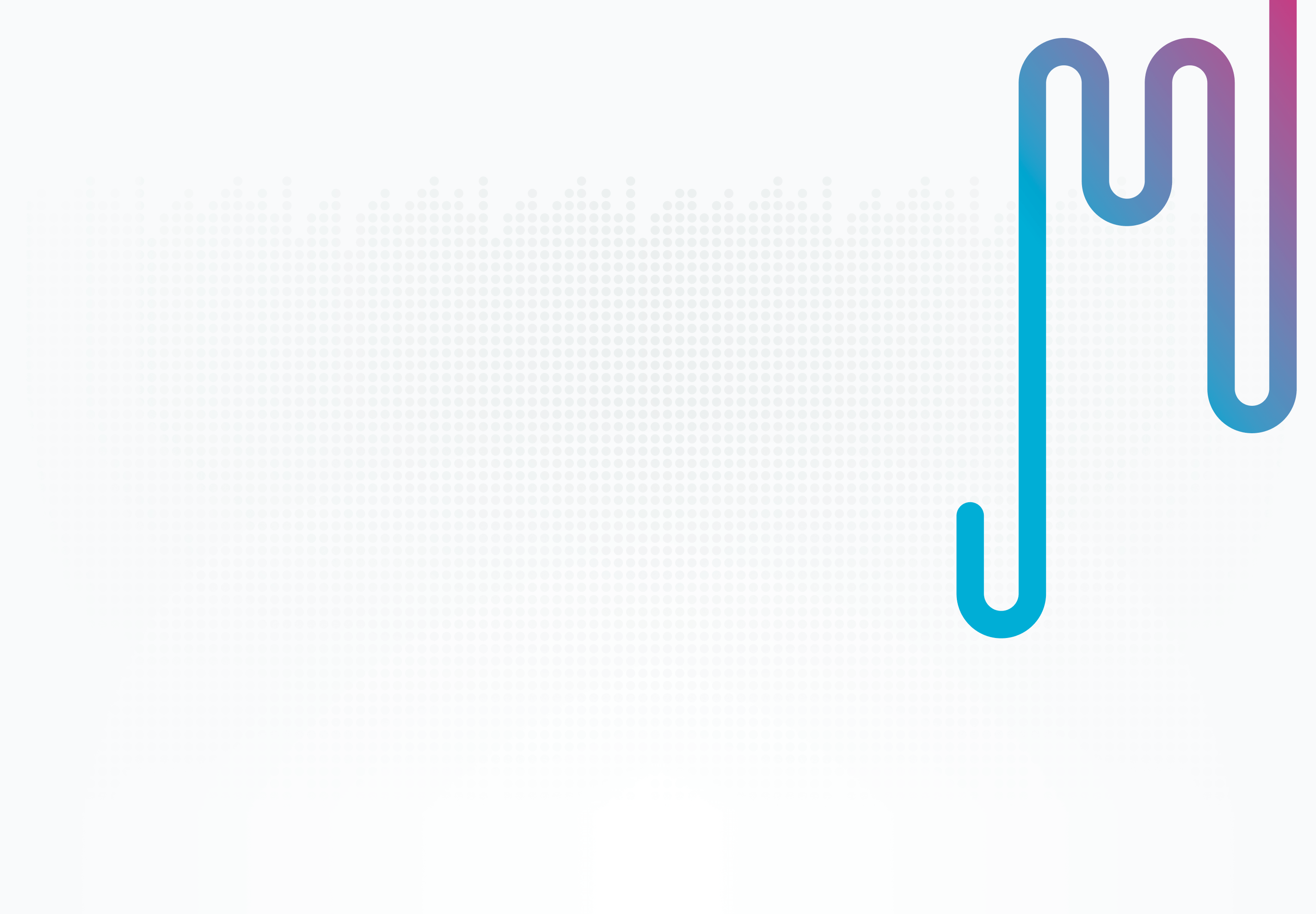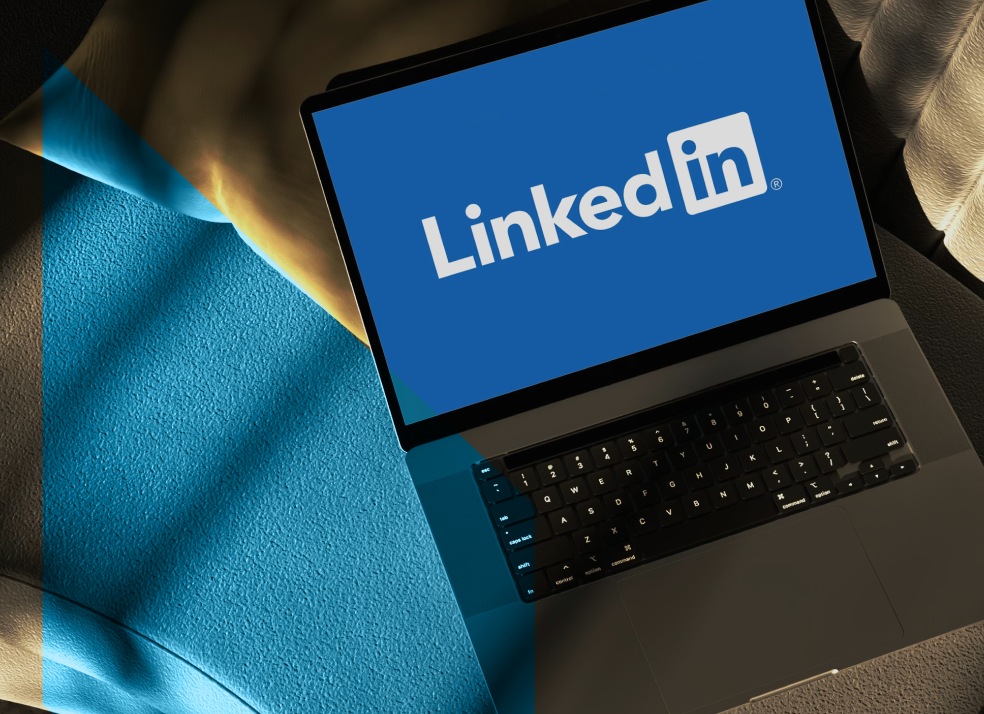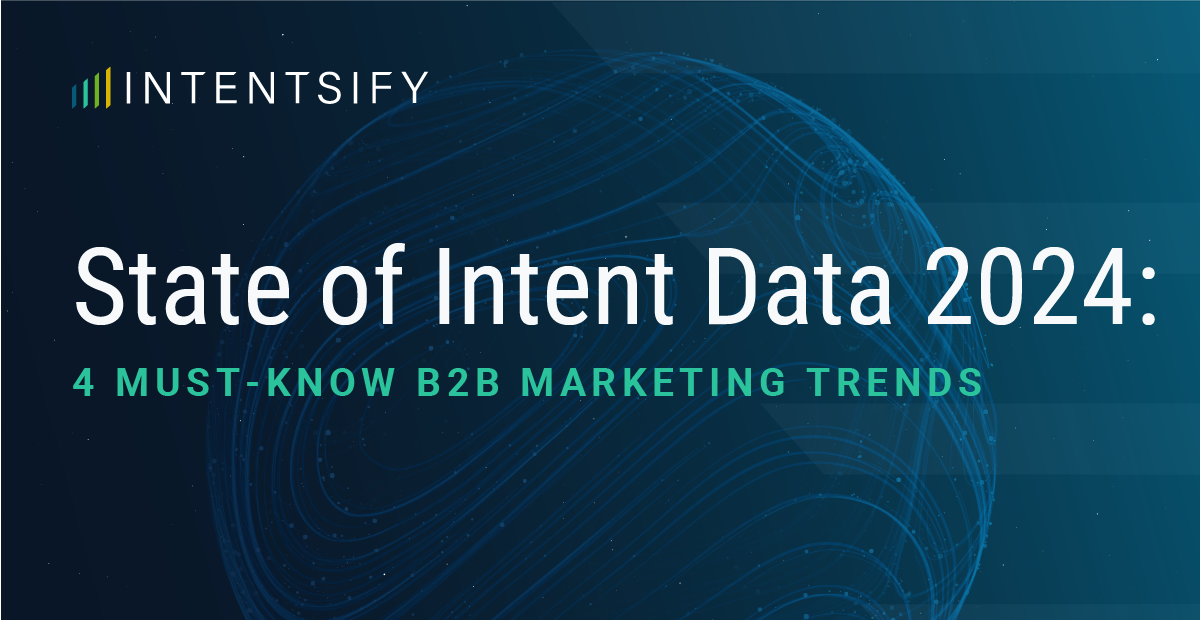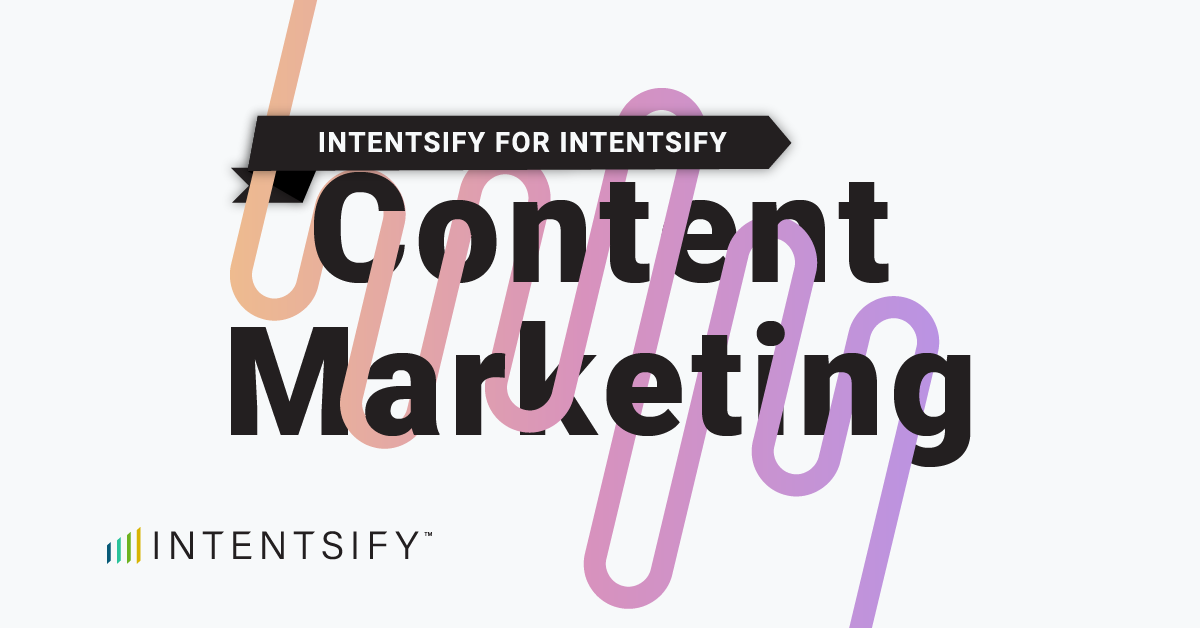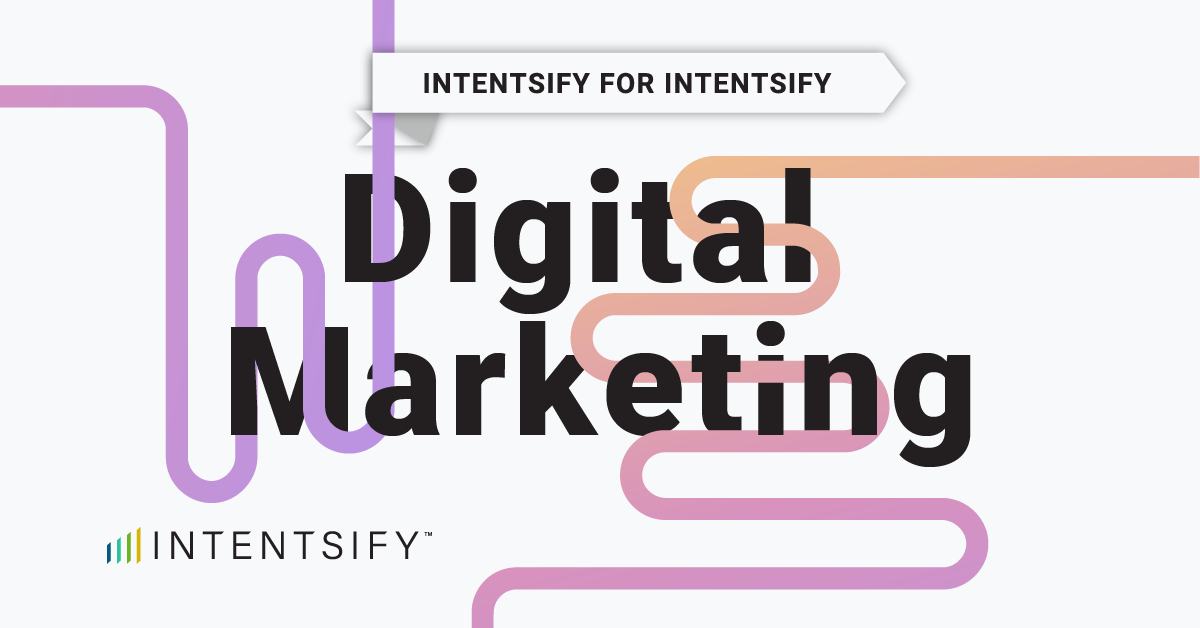If you’ve ever run a LinkedIn Ads campaign (or even thought about it) you’ve probably had two immediate reactions:
1. Wow, these targeting options are incredible.
2. Yikes, that spend for what I get is higher than I expected.
LinkedIn can command a premium price for the benefits it provides. For B2B marketers, the real question is: Is the investment worth it, and where does it deliver the most value?
This blog covers everything that drives LinkedIn ad costs, from benchmarks, to intent-based targeting, to the markets where it makes an impact on pipeline (and where it doesn’t). Expect a practical, real-world breakdown that helps you spend smarter, not just more.
1. Why LinkedIn Costs More Than Other Digital Channels
LinkedIn’s advanced targeting options (for example: job title, function, seniority, and skills) are unmatched for B2B purposes. Unlike other advertising platforms, it doesn’t let you reach just “business professionals” or even require you to provide a specific list with data points we don’t always have easy access to (or funds for).
It empowers you to zero in on decision-makers, influencers, and end-users from your exact buying groups that move the needle.
Layer in intent-based targeting? Then you get next-level refinement. Your ads reach the right people at the right moment, not just the right profile.
For instance: Out of all LinkedIn members, over 9.4 million are marketers and 31 million are sales professionals. Instead of scattering your budget across all 40 million+ of these professionals, imagine isolating just 5,000 individuals signaling intent for “marketing automation” or “sales enablement.” Even if your cost-per-click (CPC) increases slightly, your entire spend is focused on actively engaged, in-market prospects. This yields a higher click-through-rate (CTR), lower cost-per-lead (CPL) and leads that are more likely to convert to qualified pipeline.
2. Current Cost Benchmarks: What to Expect
Here’s a glimpse of what you can expect average LinkedIn ad costs to be for North America:

The costs of running a campaign vary widely and depend on several factors. However, there are ways to keep certain costs down. For example, using broader targeting can lower the cost per thousand impressions (CPM), but it often results in a sacrifice in quality.
Pro tip: When you power LinkedIn campaigns off intent-based audiences, you can sustain quality even when scaling.
3. Key Cost Drivers: What Pushes Costs Up (or Keeps Them Down)
Auction costs on LinkedIn hinge on bid, ad relevance, objective and more. Here are some things to keep in mind as you work through each.
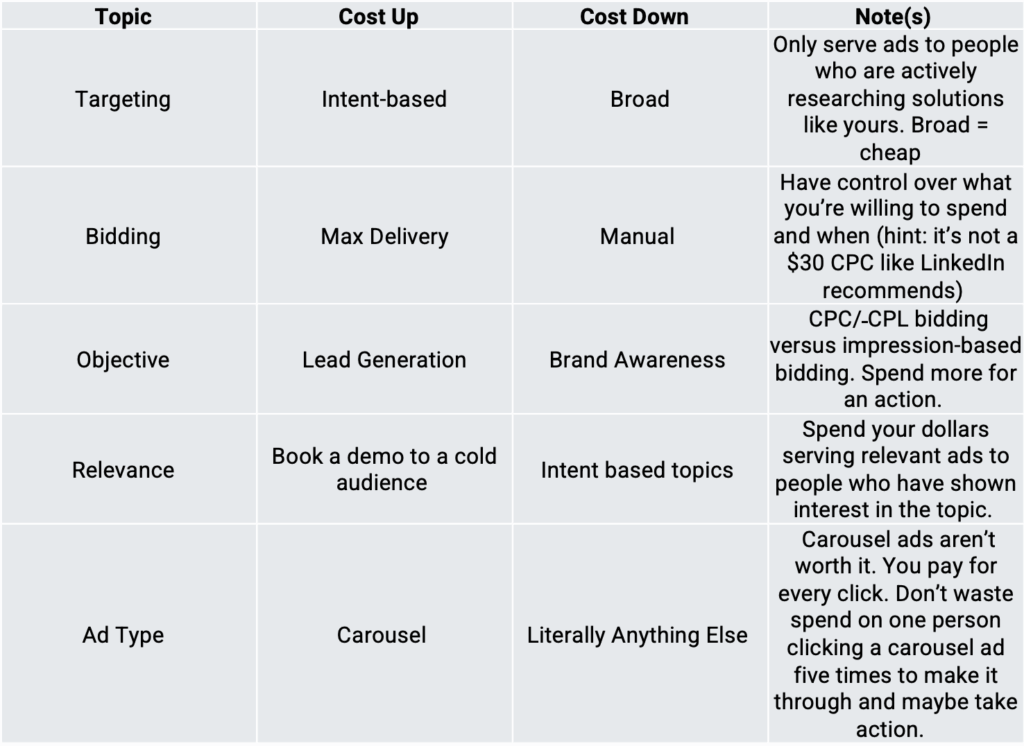
4. How to Create the Best Audience for LinkedIn Ads
One of the smartest ways you can manage and reduce LinkedIn ad costs is by building audiences based on active intent signals.
Rather than serving ads broadly across job titles or industries, intent-based audiences focus your budget on accounts and individuals already researching your solution or solutions like yours. Meaning that you’re paying to engage people who are in-market now, not just a list of prospects who look right on paper.
By concentrating impressions and engagement objectives on those showing intent, you cut waste, boost efficiency, notice higher ROI, and create predictability within your program.
5. Setting a Budget: From Pilot to Scale
Pilot Phase (1–3 months)
Aim for $3K–$5K/month per target segment. Include one test group that uses intent-based targeting to compare efficiency. Make sure you are not only testing audience segments but also copy formats, creatives, ad types, CTAs and user experiences.
Scale Phase
Scale to your full monthly budget when you’ve identified high-converting combinations of audience and creative.
Budget Tips:
During the pilot phase, try to avoid running through known “down” periods. As much as most of us spend time scrolling regardless of the time of year, some industries or geographies are more likely to have down time than others.
- Reserve 20-25% for additional testing.
- Reallocate spend toward intent-rich segments and high-performing assets as data confirms ROI.
- Avoid making optimizations immediately.
Let the algorithm learn!
6. Getting Your Bidding Strategy Right
Your bidding strategy directly impacts your LinkedIn ad costs because it determines both how aggressively you compete in auctions and how you’re charged when someone takes action.
LinkedIn offers three bidding options:
- Maximum Delivery (Automated Bidding): LinkedIn optimizes automatically to get you the most results within your budget. It’s simple but can result in higher overall costs, and less control on distribution (they may spend it in 3 hours rather than spacing it out over the course of a day).
- Cost Cap: You set a target cost per action (like a click or impression). LinkedIn balances volume and efficiency, aiming to keep you near your cap. This is nice for predictability without losing too much delivery.
- Manual Bidding: You choose the exact bid for a clickable action. While it does require monitoring, it gives you the most control. If you underbid, your ads may be slow on delivery, but it is adjustable to ensure you will get the most bang for your buck.
The action type you optimize for determines how LinkedIn charges you. For example, a CPC bid means you only pay when someone clicks, while CPM charges you per 1,000 impressions. Choosing the right strategy depends on your goal: maximizing reach, holding costs steady, or scaling for engagements.
7. Maximizing ROI on a Lean Budget
Even with $1K/month, LinkedIn can work, if you target smart:
- Focus on one high-value audience (e.g., VPs of marketing actively showing intent)
- Use compelling offers like webinars or case studies tailored what they’re already researching in your space
- Limit to 2–3 strong creative and messaging variations
- Create a user experience that is consistent, simple and keeps them engaged
- Measure actions past the click to assess true impact
A Precision Investment with Purpose
LinkedIn isn’t the cheapest ad channel—but it offers reach capabilities marketers won’t find elsewhere. For digital and demand gen teams:
- Target the right functions to maximize return
- Pair with intent-based audiences to amplify efficiency
- Manage bids and creative intentionally to control costs
- Measure ROI with depth, not just vanity metrics
B2B marketing teams need a mix of digital channels. When launched with a precise strategy, LinkedIn becomes more than an ad channel – it becomes a refined engine for high-quality pipeline.
Defining Metrics
Impressions: The number of times your content was displayed on a members feed.
Clicks: How many times members clicked on your ads.
Click-through-rate (CTR): Number of clicks divided by impressions served, times 100, for a percentage value.
Form Fills (leads): How many members clicked on your ad, filled out and submitted the associated lead gen form.
Direct Demo Requests: How many members clicked on the call the action (CTA), “Request a Demo,” filled out and submitted the lead gen form.
Conversion Rate: The percentage of members that clicked and either filled out the form directly on the platform or went to the website and filled out a form.
Lead Gen Form Completion Rate: The percentage of the members that opened and submitted a lead gen form.
Cost per Lead (CPL): The total spent on campaigns divided by the number of leads submitted, telling you how much you spent to generate each lead.
